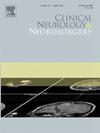由患者填写的在线 "随访表",用于评估慢性偏头痛患者继续接受抗CGRP(r)抗体治疗的情况:试点研究
IF 1.8
4区 医学
Q3 CLINICAL NEUROLOGY
引用次数: 0
摘要
背景以降钙素基因相关肽(CGRP)系统为靶点的新药的问世为原本耐药的偏头痛患者带来了重大希望,但也导致了治疗点的重大能力问题,因为患者需要在某些时间点进行随访。方法通过电话联系已在接受抗CGRP(受体(r))抗体治疗的慢性偏头痛患者,并招募他们参加为期1年的复查。结果50名患者中有39名(78%)完成了FuF,其中3名(8%)患者通过电话与FuF取得了联系。超过 90% 的患者强烈认为,FuF 表格易于理解和填写。80% 的患者强烈认为,他们对继续或停止抗 CGRP(r) 抗体治疗的决策充满信心。结论在我们的头痛服务中,我们已经证明,对于已经接受抗CGRP(r)抗体治疗的慢性偏头痛患者,设计合理的在线患者填写表格有可能取代1年复查时与患者的直接接触。本文章由计算机程序翻译,如有差异,请以英文原文为准。
Patient-completed online “follow-up form” to assess continuation of anti-CGRP(r) antibody therapy in patients with chronic migraine: A pilot study
Background
The introduction of new drugs that target the Calcitonin Gene-Related Peptide (CGRP) system has provided significant hope for patients with otherwise treatment-resistant migraine, but also resulted in significant capacity issues at the point of delivery, as patients require follow-up at certain timepoints.
Aim
Pilot a patient-completed “follow-up form” (FuF) to replace direct patient contact at the time of 1-year treatment review in patients receiving anti-CGRP (receptor (r)) antibody therapy for chronic migraine.
Methods
Patients with chronic migraine already receiving anti-CGRP(r) antibody therapy and due for 1-year review were contacted by telephone and recruited into the study. Patients completed a simple online form, which mirrored questions asked at 1-year follow-up, and a patient satisfaction survey.
Results
Thirty-nine (78 %) of 50 patients completed the FuF, which resulted in further telephone contact in 3 (8 %) patients. Over 90 % strongly agreed that the FuF was easy to understand and complete. 80 % strongly agreed that they felt confident in decision making regarding continuation or cessation of anti-CGRP(r) antibody therapy. Overall, 88 % rated their experience of the online form as “Excellent” and 12 % as “Good”.
Conclusions
Within our headache service, we have demonstrated that an appropriately designed online patient-completed form has the potential to replace direct patient contact at 1-year review in patients already receiving anti-CGRP(r) antibody therapy for chronic migraine.
求助全文
通过发布文献求助,成功后即可免费获取论文全文。
去求助
来源期刊

Clinical Neurology and Neurosurgery
医学-临床神经学
CiteScore
3.70
自引率
5.30%
发文量
358
审稿时长
46 days
期刊介绍:
Clinical Neurology and Neurosurgery is devoted to publishing papers and reports on the clinical aspects of neurology and neurosurgery. It is an international forum for papers of high scientific standard that are of interest to Neurologists and Neurosurgeons world-wide.
 求助内容:
求助内容: 应助结果提醒方式:
应助结果提醒方式:


